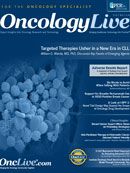Publication
Article
Oncology Live®
I-SPY 2 Designer Describes Program's Many Innovations
Author(s):
Donald A. Berry, PhD, is a leader in the development of innovative statistical methodology for the improvement of clinical trial design and analysis, especially the Bayesian methods used in the I-SPY program.
Donald A. Berry, PhD
Professor, Department of Biostatistics
The University of Texas
MD Anderson Cancer Center
Houston, TX
Donald A. Berry, PhD, is a leader in the development of innovative statistical methodology for the improvement of clinical trial design and analysis, especially the Bayesian methods used in the I-SPY program. His research deals with the theory and application of statistics, with relevance in all areas of health research. As founding head of the Division of Quantitative Sciences at The University of Texas MD Anderson Cancer, Berry has overseen the design of more than 300 clinical trials. He discussed the I-SPY program with OncologyLive.
Can you describe your involvement in the I-SPY trials and why these trials are so important?
I designed I-SPY 1 and I-SPY 2, working in developing and running I-SPY 2 with many others, especially Laura J. Esserman, MD, MBA, Anna D. Barker, PhD, and Janet Woodcock, MD. Traditional trials address a single question and progress is slow, while I-SPY 2 asks many questions, and answers them in an efficient, accurate way. Traditional trials are fixed and rigid, while I-SPY 2 is flexible and adaptive. The goal and the effect is to greatly decrease the overall duration of drug development. Both aspects are essential for accelerating progress in cancer. In addition, I-SPY 2 uses information garnered in the trial to treat trial participants more effectively.
I-SPY 2 introduced many innovations into the modern era of clinical trials and drug development, including:
- Experimental agents evaluated for efficacy first in early “curable” disease
- Many pharma companies contributing experimental drugs in an implicitly competitive trial, to everyone’s benefit
- Learning during the trial which experimental regimens benefit which biomarker subsets
- Adaptive randomization: patients with tumors that respond better to an experimental agents get assigned to that agent with higher probability. There are two important consequences: (1) patients in the trial receive treatments better for them and (2) agents that are performing well in particular subsets move through the process and “graduate” more rapidly
- Regimens enter and leave the trial
- Screening all patients for markers
- Master protocol
- Phase II trial but driven by a registration endpoint
- Longitudinal modeling of patient outcomes (MRIs are given early to help understand the course of the patient’s disease and relate early assessments to the longer-term primary endpoint of the trial)
- Combination therapies
- Adaptive sample size (veliparib graduated with 62 patients having been assigned and neratinib graduated having been assigned to 115 patients)
- Graduations and futility dropping are based on predicting future success in a subsequent phase III trial
- Learning about off-target effects
- Common control arm
What is the status of the I-SPY 2 trial?
About 900 patients have been screened and about 600 randomized. Veliparib/carboplatin and neratinib have graduated, but patients are still being followed. The regimens that are actively being randomized are AMG 386, AMG 479, MK-2206, pertuzumab, and pertuzumab/T-DM1.
What is happening with the agents that have graduated, and are there other treatment regimens that will replace them in I-SPY 2?
Both recent graduations are now entering phase III, including discussions with regulators. There are a number of other candidates and some will be added to the extent that accrual allows.
Are there any limitations/disadvantages to the adaptive trial design used in I-SPY 2?
I don’t know if “limitation” is the right word, but I-SPY 2 requires a different way of communicating its results. For example, adaptive randomization means that for a particular regimen the proportion of successes in a particular biomarker signature is a biased estimate of the regimen’s true success proportion within that signature. Instead, we give Bayesian probability distributions regarding the regimen’s effect for that signature.
Are there other adaptive trials in development for other types of cancer?
Oh, yes. Melanoma is furthest along. MICAT (Melanoma International Collaboration for Adaptive Trials) is a collaboration of the International Melanoma Working Group, AIM at Melanoma, PPD, Berry Consultants, and pharmaceutical companies. Diseases outside of cancer also are being studied (see Mullard A. Nat Med. 2014;20[1]:3).
I-SPY 2 Adaptive Process
Illustration courtesy of Donald A. Berry, PhD




























%20(2)%201-Recovered-Recovered-Recovered-Recovered-Recovered-Recovered-Recovered-Recovered-Recovered-Recovered-Recovered-Recovered-Recovered-Recovered-Recovered-Recovered-Recovered.jpg?fit=crop&auto=format)
%20(2)%201-Recovered-Recovered-Recovered-Recovered-Recovered-Recovered-Recovered-Recovered-Recovered-Recovered-Recovered-Recovered-Recovered-Recovered-Recovered-Recovered-Recovered.jpg?fit=crop&auto=format)